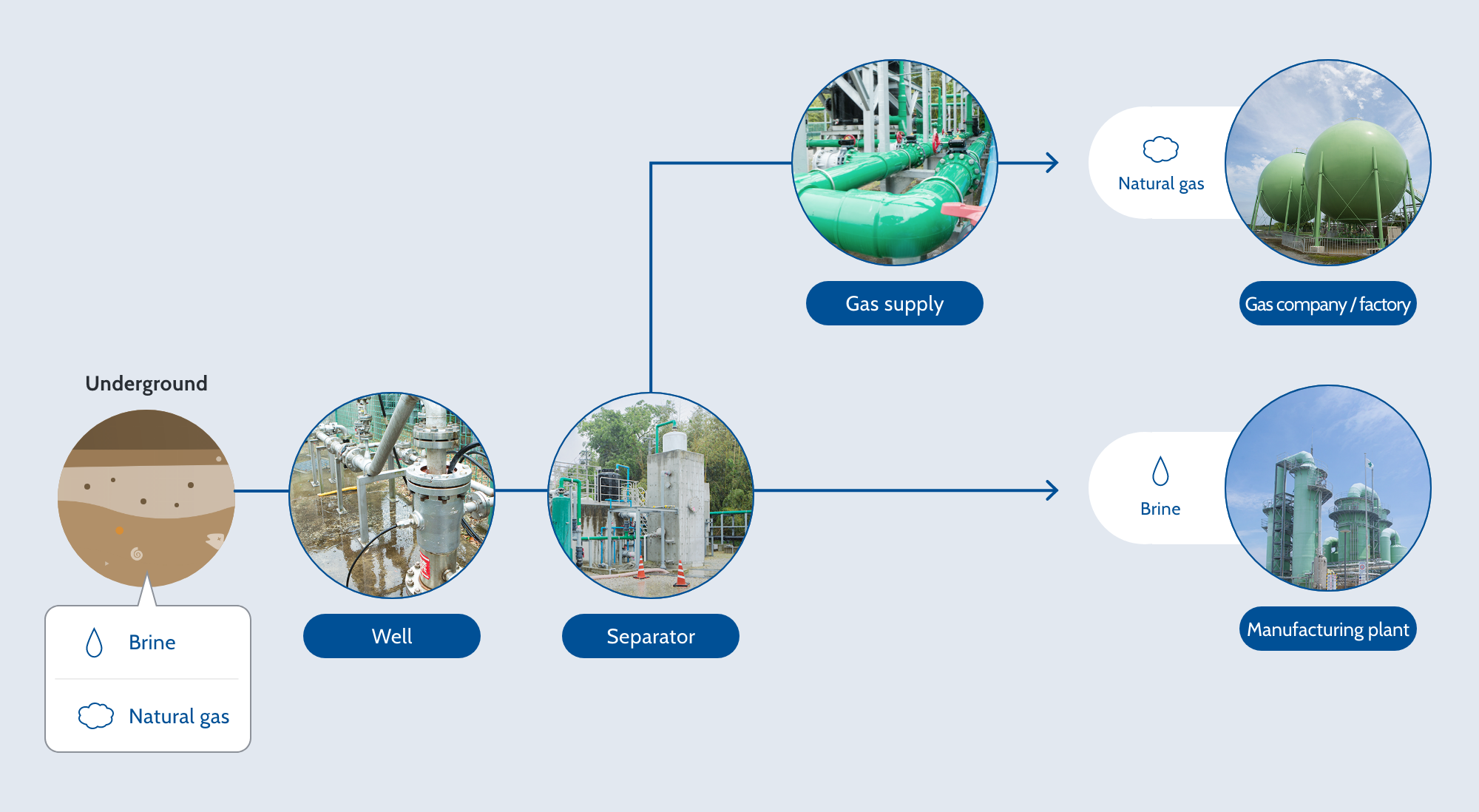Natural gas
Environmentally friendly energy source created by nature
Natural gas is found deep beneath the Earth’s surface. We produce highly pure methane.

The natural gas we produce is methane, which we extract from soluble gas dissolved in brine. Over the long history of the Earth, organic matter buried deep underground is decomposed by bacteria, which creates methane. Natural gas is 99% methane, which contains almost no carbon monoxide or impurities, and can be considered an environmentally friendly energy source because it produces less carbon dioxide emissions than petroleum and other fossil fuels when burned.
Relationship to iodine
Natural gas and iodine are very closely related. Both are produced from the plentiful brine nestled within Mother Earth. Wells pump brine from 900–2,000 meters underground to the surface and into a separator that separates the natural gas from the brine. The natural gas is then transferred by a compressor to pipelines to be supplied to gas companies and factories.
On the other hand, the brine is sent to a manufacturing plant where it is used as the source for producing iodine.

A reliable, safe and clean energy source
From now on, the world is likely to associate energy development with such notions as “reliable,” “safe” and “clean.” If the effort to shift from nuclear energy to other forms of energy gains momentum, besides research on solar and wind power, we may see considerable research devoted to generating power from natural gas. What’s more, natural gas vehicles attracted attention after the Great East Japan Earthquake because they were unaffected by the gasoline shortage that followed it. Domestically produced natural gas is expected to provide a stable supply of a “clean” energy source that is “reliable” and “safe.”
